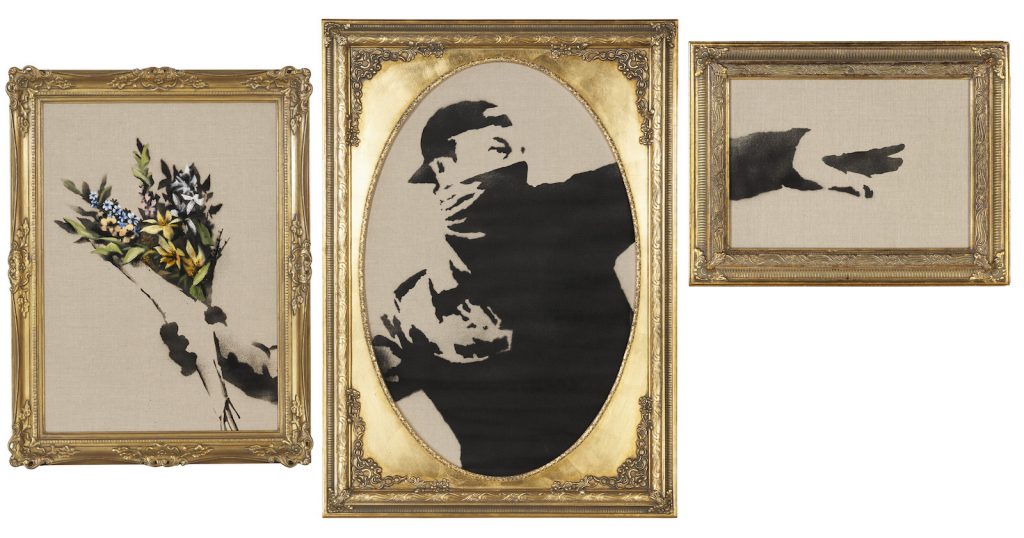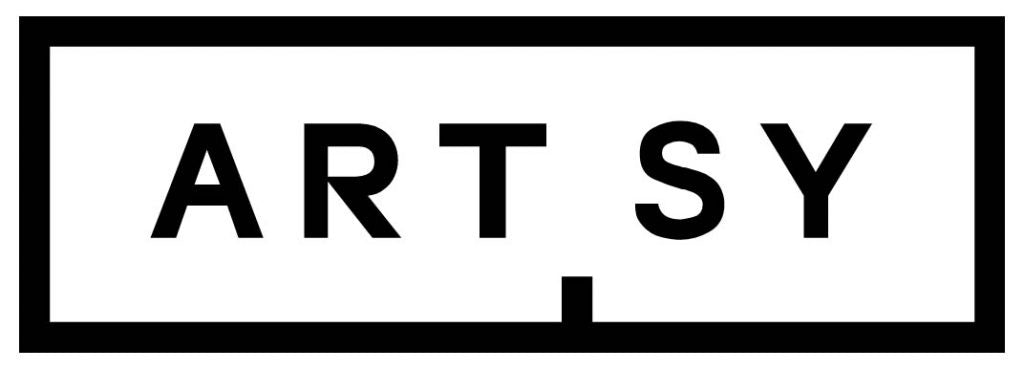Fine Art Framing Guide
Framing is as critical to a work of art as lighting or placement. A well-chosen frame preserves, protects, and elevates a piece — ensuring it endures for decades while complementing its aesthetic intent.
Collectors are strongly encouraged to work with professional framers experienced with galleries, museums, and institutions. Please contact for a list of recommended framers in your area. This guide serves as a reference for museum-grade, conservation framing standards.
1. Moulding (Frame Material)
The moulding defines both the visual character and structural integrity of a frame. Museum-grade mouldings are typically made from hardwood or metal profiles. Veneer is an excellent, more economical option that remains popular among galleries and collectors.
Materials:
- Solid Wood: Timeless, warm, and naturally varied — each frame’s grain pattern is unique.
- Veneer: Ideal for consistent finishes and a modern, minimalist look.
- Aluminum: Sleek and lightweight, commonly used for contemporary photography and works on paper.
Profiles: Most gallery-standard frames range from ¾ inch to 1 inch face width for works up to 30 × 40 inches. Slim profiles create a subtle border, while deeper or more ornate mouldings suit larger or more dramatic pieces. For a classical presentation, ornate profiles — often seen on Banksy or Old Master-inspired editions — have become increasingly popular. This is purely an aesthetic choice guided by the artwork and the collector’s taste.
2. Glazing: Glass vs. Acrylic
Proper glazing protects artwork from dust, humidity, and, most importantly, ultraviolet light. UV-filtering acrylic (plexiglass) is widely preferred in fine art framing.
Why Acrylic (Plexiglass) Is Preferred
Acrylic has become the industry standard among museums and galleries. It is lighter, shatter-resistant, and offers superior UV protection compared to traditional glass. It is also safer for shipping and easier to handle for large works.
Acrylic Options
- Standard UV Acrylic: Filters up to 85% of UV rays. Not recommended for fine art.
- 99% UV Acrylic: Filters 99% of UV rays; ideal for valuable works on paper and non-archival media.
- Tru Vue Optium Museum Acrylic: Filters 99% of UV rays, anti-reflective, anti-static, and scratch-resistant. Considered the museum standard for delicate, high-value artworks.
- Non-Glare Variants: Recommended for bright or windowed environments; may slightly soften fine detail.
Recommendation: For most collectors, 99% UV acrylic offers the best balance of protection, clarity, and longevity.
In bright or windowed spaces, Tru Vue Optium Museum Acrylic is recommended to minimize reflections. Whenever possible, display artworks away from direct sunlight to prevent natural fading.
3. Mounting & Conservation
The mounting method directly affects long-term preservation. Only reversible, conservation-safe techniques should be used so that artworks can be safely removed in the future without damage.
Hinge Mounting (Recommended): The archival standard for works on paper, prints, and multiples. This method uses acid-free Japanese paper and wheat starch paste to attach the artwork to its backing. It allows natural expansion and contraction of the paper. Framers may vary hinge materials depending on paper weight — acceptable as long as they are 100% reversible and leave no residue.
Dry Mounting (Not Recommended): Uses heat and adhesive to create a flat surface. Acceptable for posters, but irreversible and unsuitable for fine art prints, editions, or collectibles.
Cold Mounting: Used for large-scale photographs on Dibond or aluminum panels, providing rigidity without heat exposure.
Collector’s Note: Avoid dry mounting limited editions or multiples — hinged mounting preserves both the integrity and the market value of the work.
4. Mats and Spacers
Mats and spacers provide both visual breathing room and physical separation between the artwork and glazing.
Mat Types
- Standard Matboard: Acid-free and pH-neutral; suitable for decorative use.
- Archival Cotton Rag Matboard: 100% cotton fiber; museum standard for fine art and collectible prints.
- UV-Protective Matboard: Contains a UV barrier that minimizes light damage along exposed mat edges.
Color Choices
- Bright White: Clean and modern; complements photography and works with cool tones.
- Soft White / Off-White: Warmer and more traditional; pairs well with vintage, lithographic, or hand-pulled prints.
- Black or Charcoal: Provides contrast for high-key or brightly colored artworks.
Avoid matting artwork that has pigment, ink, or color extending to the paper’s edge, as this can result in uneven fading or mat burn — discoloration that develops where matboard contacts paper over time.
Float Mounting: Float mounting reveals the full edges of the artwork, producing a shadow gap between the piece and backing board.
- Modern Presentation: Approximately ½ inch reveal.
- Large or Statement Works: 1–2 inches of float space for greater visual impact.
Spacers: When no mat is used, spacers prevent the artwork from touching the glazing. Options include clear acrylic, painted wood, or aluminum profiles matched to the frame’s depth.
5. Plexiboxes
Plexiboxes (acrylic boxes) are often used for contemporary works, screenprints, and photography. They offer a clean, sculptural appearance and full visibility of the artwork without traditional moulding.
Constructed entirely from UV-filtering acrylic, plexiboxes are lightweight, durable, and frequently used by museums and galleries for modern editions.
Best suited for:
- Screenprints and Pop Art editions (Warhol, Haring, etc.)
- Collages, layered works, and mixed media
- Minimalist environments favoring transparency and lightness
Each plexibox is custom fabricated to size, with proper UV protection and depth for ventilation and safety.
6. Care & Maintenance
Proper maintenance ensures that framing materials remain in optimal condition.
Acrylic: Use a soft, lint-free microfiber cloth. For deep cleaning, use ammonia-free acrylic cleaners such as Novus Plastic Polish.
Avoid glass cleaners or abrasives that may cause haze or scratches.
Wood Frames: Dust gently with a soft cloth. If necessary, clean with mild soap and water sparingly. Avoid solvents or excessive moisture.
Metal Frames: Wipe with a dry cloth. Do not use acidic or alkaline cleaning products. Never use paper towels or ammonia-based sprays — they can permanently damage acrylic glazing.
7. Hanging Systems
Different hardware types are used depending on the frame’s size, weight, and installation environment.
- Wire Hanging: Suitable for works up to 30 × 40 inches.
- French Cleats / Metal Cleats: Used for larger or heavier works, ensuring level installation.
- Security Hardware: Recommended for public or high-traffic spaces.
Hardware should always be rated for the frame’s total weight and attached to secure wall anchors.
8. Framing Reference Standards
General Guidelines
- Use only acid-free, lignin-free, and UV-protective materials.
- Avoid adhesives, heat-based processes, or spray mounts.
- Framing methods should remain fully reversible for conservation purposes.
- Keep framed works away from direct sunlight, heat sources, and humidity.
- Handle frames with cotton or nitrile gloves to prevent surface damage.
Display Environment: Temperature and humidity fluctuations should be minimized. Recommended conditions:
- Temperature: 65–75°F (18–24°C)
- Relative Humidity: 40–55%
Inspection: Inspect framed works annually for signs of condensation, warping, or fading. Early detection can prevent long-term damage.
Glossary of Common Framing Terms
- Archival: Materials that meet conservation standards for longevity and chemical stability.
- Float Mount: Artwork mounted on top of the backing board, showing its full edge.
- Hinge Mount: Reversible mounting method using Japanese paper hinges and wheat starch paste.
- Mat Burn: Discoloration caused by acidic matboards or uneven light exposure.
- Moulding: The structural outer frame material.
- Museum Glass / Acrylic: Glazing with anti-reflective coating and 99% UV filtration.
- Spacer: Material separating artwork from glazing when no mat is used.
- UV Protection: Blocks ultraviolet light that causes fading and deterioration.




